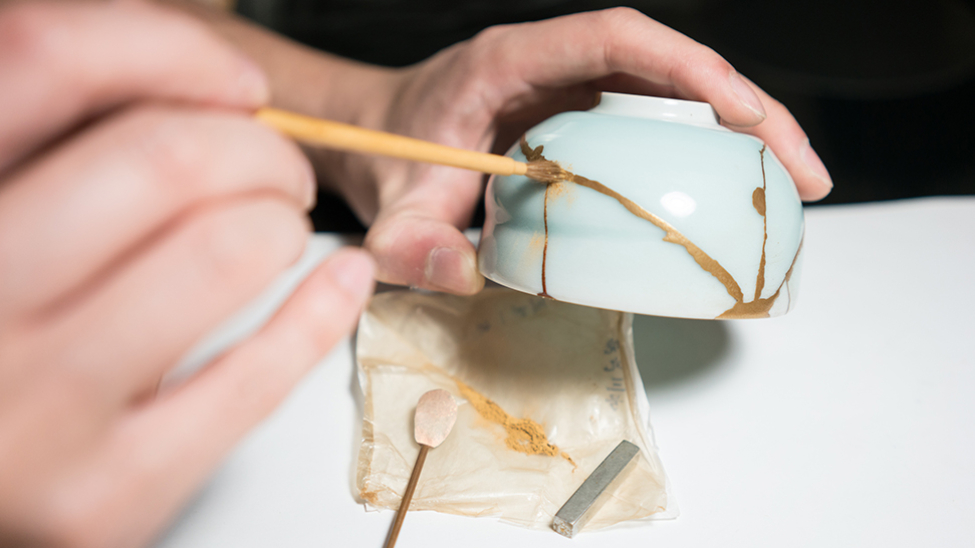We live in an era in which the concept of throwaway is something very normal, but it has not always been so. What is broken can be fixed, and sometimes with better result than expected.
There is a Japanese craft technique called kintsugi (金継ぎ),which could be translated as gold carpentry, that consists of repairing fractured ceramic objects using a special resin mixed with gold, silver or platinum powder. Beyond simply fixing the piece, kintsugi highlights the cracks and makes them an integral part of its history and beauty.
Repairing these fractures teaches us that more often than not, flaws can be turned into virtues. The cracks are part of the piece, they tell its story and define it as unique and original. This philosophy translates into a positive and transformative approach to adversity, and can be applied to everyday life in a variety of ways.
Kintsugi does not seek to fix flaws by hiding them, it simply turns the broken piece back into something whole, highlighting its seams, just as warriors display their scars to tell their story.
Wounds (of all kinds) are not something we should be ashamed of or hide, on the contrary, they are what have forged the current person, it is part of history. We usually use the phrase “what does not kill you makes you stronger”, the important thing is to heal and learn. Some time ago a doctor explained to me that when a fractured collarbone heals, it creates a union that is almost impossible to break again in that place, because it is the hardest part of the collarbone.
In kintsugi, wounds do not disappear but turn to gold, emphasizing the importance of knowing how to rebuild oneself.

In an ever-changing world, especially in business and technology, organizations are looking for innovative ways to face challenges and turn them into opportunities for growth, facing failures and disappointments in the process. In this context, this ancient Japanese technique of repairing fractured ceramics can offer a valuable perspective on how to deal with setbacks and transform them into beneficial opportunities.
To foster a corporate culture that embraces change and adaptation as fundamental pillars, we can rely on the metaphor of kintsugi. Kintsugi is also closely linked to the Japanese idea of mushin, the acceptance of change. Nothing is eternal, everything changes, everything can be broken, everything can be fixed.
In companies, leaders must encourage employees to take calculated risks, learn from mistakes and find opportunities for growth even in difficult times. They must encourage them to fix the breaks and turn the final piece into something more valuable. Focusing on resilience enables organizations to become stronger and position themselves for success in an ever-evolving future.
This resilience is also key to ensuring the continuity and efficiency of an organization’s information systems. If we approach it from a technological point of view, the application of kintsugi principles can foster a culture of resilience in engineering teams, where failures are not seen as insuperable obstacles, but as opportunities for learning and improvement. Promoting collaboration and effective communication helps to highlight the potential of teams and enable them to deal with challenges more effectively. In addition, creating an environment that encourages experimentation and innovation without fear of failure fosters creativity in developing solutions. It is turning failures and disappointments into opportunities to strengthen the technological environment. A clear example of this is contingency planning.
But companies are made up of people. In the field of human resources, kintsugi should be applied to promote human development. Personal and professional development programs can include stress management workshops and promoting a healthy work-life balance. It is the promotion of a culture of continuous learning and improvement. By strengthening employees’ ability to excel, organizations benefit from a more resilient and committed team, capable of meeting the challenges of the business and personal environment.
Kintsugi offers a unique perspective on how to approach life’s challenges, whether personal, technological or business, from a position of resilience and positive transformation. By applying the principles of kintsugi, organizations can foster a culture of adaptation, and promote the growth and individual resilience of their employees. Organizations can turn adversity into a source of strength and growth; the best recipe for long-term advantage in the business world.